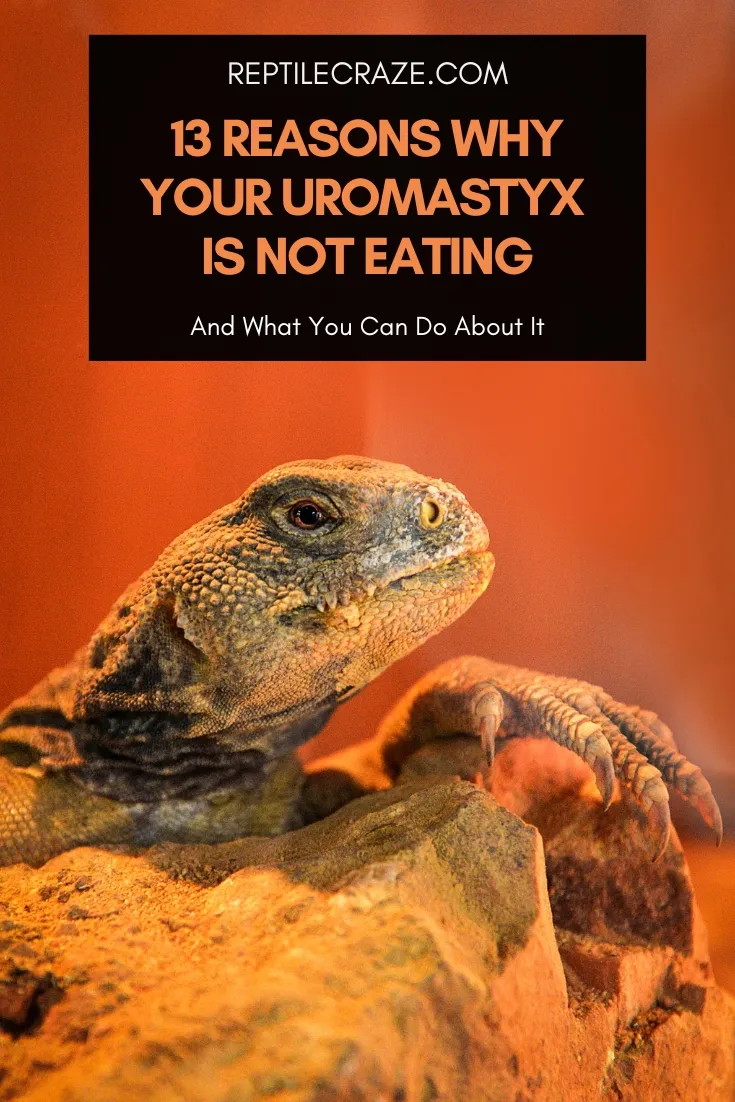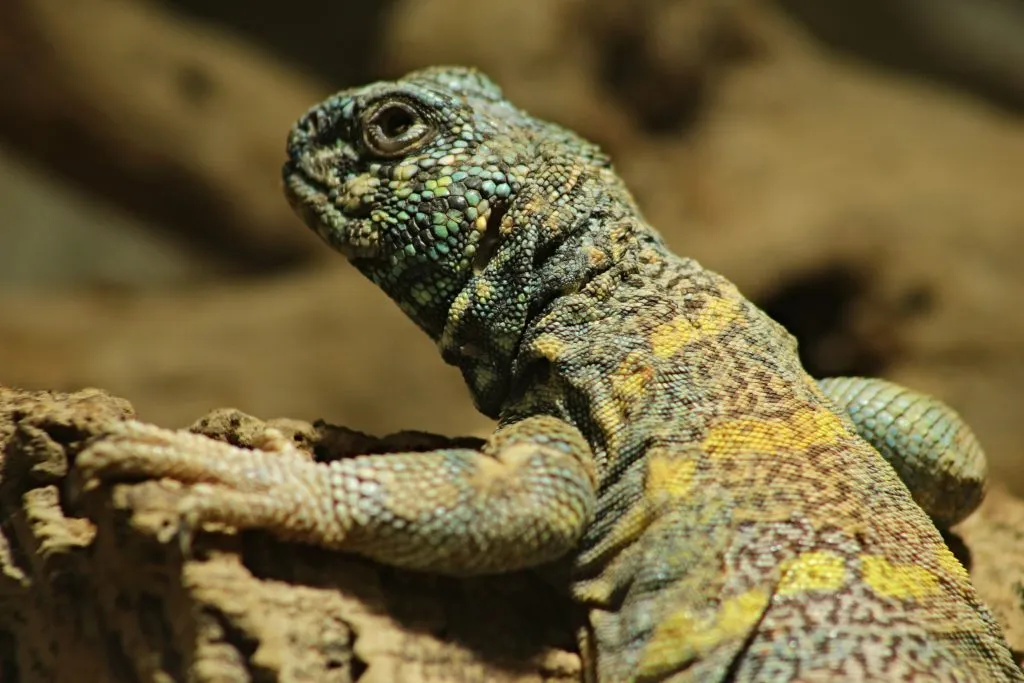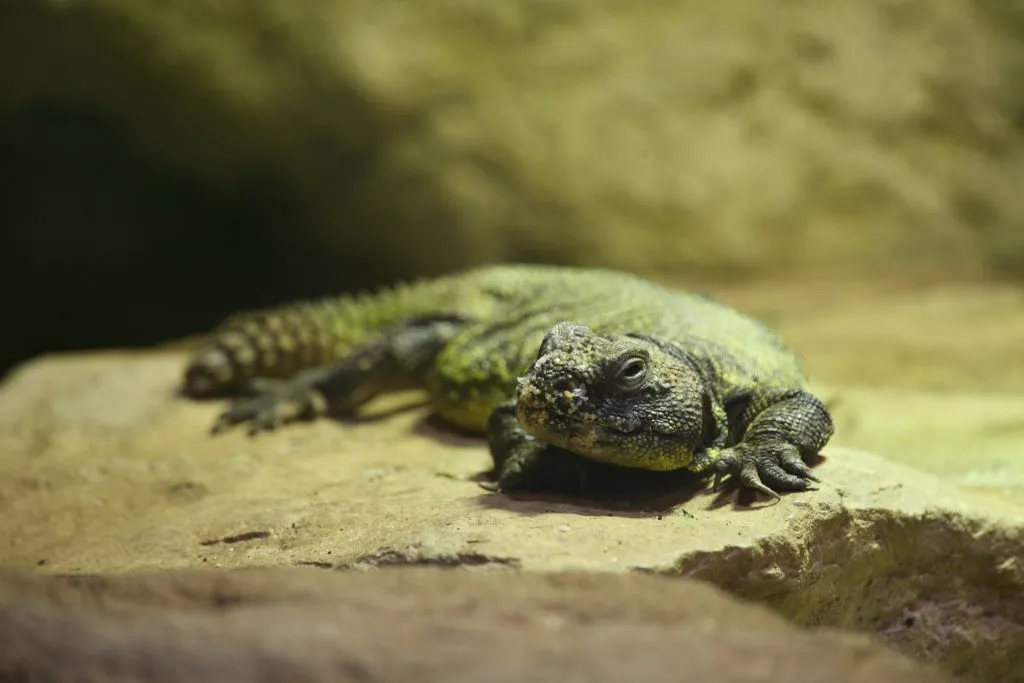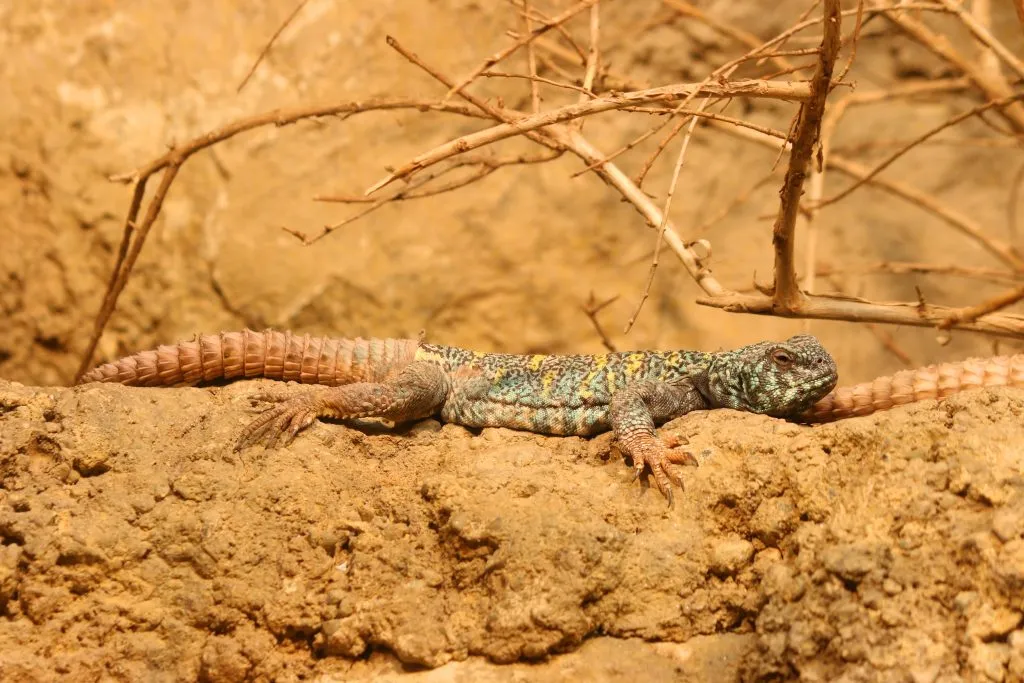
It can be incredibly concerning when your Uromastyx is not eating. Before you worry excessively, though, you should know that there are several reasons why this may be happening, some of which are perfectly normal for the species.
Some of the most common reasons include stress, improper lighting or temperature, and even the wrong diet. Sometimes, there are some more serious issues like impaction, dehydration, parasites, and physical trauma, but most are pretty easy to diagnose and address.
In this article, we’ll talk about the different reasons your Uromastyx isn’t eating, how long it can go without eating, and what you can do to try to get it back on track.
Table of Contents
Reasons Your Uromastyx Is Not Eating
Here are the most common reasons your Uromastyx might not be eating. We’ll divide them into less serious and more serious ones so that you can narrow down the possibilities better.
Mild Reasons Why Your Uromastyx Is Not Eating
Not all reasons your Uromastyx isn’t eating are serious. Before you panic, here are some of the less serious reasons to consider.
1. Acclimation
Uromastyx, like many lizards, have a period of acclimation when they first come home with you. During this time, they may be too stressed to eat.
This is especially common if they’re not used to being handled or are in a new environment.
Give your Uromastyx some time to adjust to its new home before trying to feed it. It’s best to keep handling and disturbances to a minimum during this period so that it can get used to its surroundings more quickly.
2. Wrong Temperature

If the temperature in your
Uromastyx require specific temperatures to maintain their metabolism and digestion. If the temperature is too low or too high, it can affect their health and make them lose their appetite.
To prevent wrong temperatures inside the
If you need to correct the temperature, do it gradually until it reaches the recommended range – preferably over a few days. This is because sudden changes can also stress out your Uromastyx and affect its appetite.
Lastly, keep in mind that you need to provide a specific basking spot for your Uromastyx, with temperatures ranging from 110-120°F and a cooler side of the enclosure with temperatures around 80°F.
3. Incorrect Lighting
Lighting is an important factor in maintaining the health of your Uromastyx. Inadequate lighting can affect their appetite and overall well-being.
Uromastyx need to have UVB lighting for proper calcium absorption, which is necessary for strong bones and overall health.
Without enough UVB lighting, your Uromastyx may experience metabolic bone disease, which can lead to loss of appetite and other health issues.
In addition to UVB lighting, your Uromastyx also needs a regular day/night cycle.
These diurnal animals need at least 12 hours of light per day and 12 hours of darkness per day to maintain their natural circadian rhythms.
An under-tank heater such as the iPower Terrarium Heater is the best way to keep your
Make sure you provide plenty of shade and hiding spots within the enclosure to allow your Uromastyx to hide when needed, or when it feels like it.
Tip: If you want to know how to take proper care of your uromastyx, read our uromastyx care guide here!
4. Improper Diet

If your Uromastyx isn’t eating, it may be because it’s not getting the right
Uromastyx are technically omnivores because they consume both plants and animals, but they are primarily herbivorous.
There are also certain species, like the Arabian Spiny-tailed Lizard (Uromastyx aegyptia) that are strictly herbivores.
Regardless, most captive Uromastyx need a diet that consists mostly of herbivorous foods, like vegetables, fruits, seeds, and even flowers.
They appreciate insects like crickets every now and then, but since they’re primarily herbivorous, these should be given in moderation. Too much animal protein can cause damage to their organs, particularly their kidney.
5. Food Preferences
Uromastyx have specific dietary requirements, and they may become picky eaters if their
Occasionally, Uromastyx may stop eating if the
Some uromastyx may prefer certain types of foods over others, so it’s important to experiment and find out what they like best.
6. Shedding
Shedding is a natural process for Uromastyx lizards, during which they shed their outer layer of skin to make room for new growth.
Shedding can affect your Uromastyx’s appetite in a few ways:
- Can be uncomfortable, causing them to feel stressed or irritable.
- Requires plenty of energy and resources from your uromastyx’s body.
- Has requirements that need to be met, such as correct humidity levels.
If you want to help your uromastyx manage its shedding process, make sure to provide the appropriate humidity levels and maintain a regular misting routine.
Also, it should have access to a plate of fresh drinking water just in case, although most uromastyx tend to get water from their
7. Brumation
Brumation is a period of dormancy that uromastyx go through during the winter months.
During brumation, their metabolic rate slows down, decreasing their appetite and increasing their sleeping time. This is a natural process for uromastyx and helps them conserve energy during the colder months.
During brumation, your uromastyx’s appetite will decrease significantly, and they may not eat at all. It’s important to monitor their weight during this time to ensure they are maintaining a healthy body condition.
Also, once your uromastyx emerges from brumation, they may still not get their appetite back immediately. Make sure you start with small portions of easily digestible foods and gradually increase the amount over several days.
Serious Reasons Why Your Uromastyx Is Not Eating
Unfortunately, there are some more serious reasons why your Uromastyx may not be eating. If none of the above explanations seem to fit, you may want to look at the following possibilities.
Keep in mind that these should be addressed as soon as possible to ensure your Uromastyx’s safety and well-being.
8. Stress
Stress can be caused by many things, so it’s pretty much an umbrella term that can cover various reasons why your Uromastyx may not be eating.
Common stressors for Uromastyx include drastic changes in their environment, other animals or people in the area, or an unfamiliar habitat.
Stress can lead to decreased appetite, so it’s important to identify the source of stress and eliminate or reduce it.
9. Dehydration

Uromastyx lizards are adapted to arid environments and are naturally equipped to conserve water. However, if they don’t have access to enough water or if their enclosure is too dry, they may become dehydrated.
Dehydration has a significant impact on a Uromastyx lizard’s health and appetite. It causes the kidneys to conserve water by producing less urine.
As a result, uric acid builds up in the bloodstream, which can lead to digestive issues and other health problems such as anorexia, a common but potentially serious problem for reptiles.
Symptoms of dehydration in Uromastyx include:
- Loss of elasticity in the skin
- Loss of appetite
- Extreme lethargy
- Wrinkled or sagging skin
- Cracked scales
- Small or missing urates
- Sunken eyes
- Inability to shed
This is why it’s important for owners of Uromastyx lizards to provide them with plenty of fresh water and high-fiber vegetables, as well as maintain proper humidity levels in their enclosures.
10. Impaction
Impaction is a common but also potentially serious condition in Uromastyx lizards, which occurs when they ingest loose substrate or other foreign objects that cannot be properly digested.
If left untreated, impaction can lead to health problems and can even be fatal. Symptoms you should watch out for include:
- Loss of appetite
- Weight loss
- Difficulty passing stool
- Irregular or lack of bowel movements
- Lethargy
- Vomiting or regurgitation
- Difficulty breathing
- Bruised or bloated abdomen
Mild cases of impaction can be treated by offering a diet high in fiber and moisture, as well as providing fresh water to help move the foreign material through the digestive system.
In more serious cases, you may have to bring your Uromastyx to a herp vet to get them medication or surgery.
11. Parasites
In some cases, your Uromastyx may be suffering from parasites that can cause digestive issues.
Common parasites such as worms (pinworms and tapeworms), giardia, and coccidia can cause a reptile’s intestines to become irritated or inflamed, leading to decreased appetite.
Worse, these parasites multiply rather quickly, which can exacerbate the problem.
Uromastyx typically get parasites through contaminated
Make sure you regularly clean and disinfect their enclosure and provide them with fresh
12. Ilnesses/Infection
It’s also possible that your Uromastyx may be suffering from a more serious illness or infection. This is especially true if they haven’t eaten for several days and none of the above explanations seem to fit.
Common illnesses and infections that could be affecting your Uromastyx’s appetite include the following:
- Respiratory infections. Respiratory diseases such as Acute Respiratory Distress Syndrome (ARDS) not only impact the appetite of Uromastyx, but they’re also potentially fatal. In one study, the uromastyx regained its appetite while in the hospital. Sadly, the symptoms reemerged after it was released from the vet hospital, and the lizard died two weeks later.
- Metabolic bone disease. As mentioned in a previous section, this condition is caused by inadequate exposure to UVB lighting and a lack of calcium in the diet. It can cause pain and discomfort, leading to decreased appetite.
- Mouth infections. Also known as infectious stomatitis, mouth rot is a common bacterial infection in reptiles like Uromastyx and Bearded Dragons that affects the mouth and gums, causing inflammation and pain when eating.
- Dental issues. Other dental problems, such as abscesses, can also cause pain when eating or swallowing, affecting your Uromastyx’s appetite.
- Liver disease. Reptiles are prone to liver disease due to their unique digestive system, and uromastyx are not an exception. Symptoms of liver disease may include lethargy, weight loss, and anorexia. If left untreated, it can also progress to other health issues, some of which may be fatal.
- Kidney disease. Kidney disease is another common health issue in uricotelic animals like uromastyx lizards. One of its symptoms is loss of appetite.
Some infections may also lead to systemic effects throughout the body that can decrease appetite. For example, severe bacterial infections can cause fever and lethargy, making the Uromastyx lizard less interested in eating.
13. Physical Trauma

Physical trauma can also have a significant impact on the appetite of Uromastyx lizards.
When a Uromastyx lizard experiences physical trauma, such as an injury or a fall, it can cause pain and discomfort that can lead to decreased appetite and anorexia.
Depending on the severity of the trauma, it can cause internal injuries that may not be immediately visible.
For example, if your Uromastyx falls from a high place or is accidentally stepped on, they may experience internal bleeding or damage to their organs that could lead to loss of appetite.
Similarly, broken bones or other injuries can make it difficult for Uromastyx lizards to move around comfortably and access their
In some cases, physical trauma may also cause stress and anxiety in Uromastyx lizards. This can further decrease their appetite and make them more susceptible to illness.
How Long Can Uromastyx Go Without Eating?
Now that we know the different reasons why Uromastyx lizards may not be eating, how long can they go without
The answer is that it depends. A healthy adult Uromastyx doesn’t mind eating every other day. Younger Uromastyx lizards below two years of age have a pretty voracious appetite, though, so they typically eat daily.
However, during brumation or winter, Uromastyx routinely go one to two months without eating. Some species, such as Uromastyx hardwickii, can even go up to a whopping six months in their underground lairs without
This is because their metabolism slows down during this period, so they don’t require as much
Remember that each Uromastyx has its own personality and preferences when it comes to
- Eastern Rat Snake: Nature’s Pest Control and Fascinating Reptile - September 20, 2024
- Eastern Racer: The Fast and Agile Snake - September 19, 2024
- The Eastern Indigo Snake: The Majestic, Non-Venomous Hunter of the Southeast - September 18, 2024
